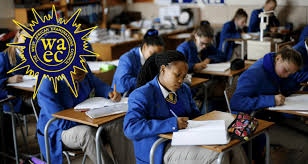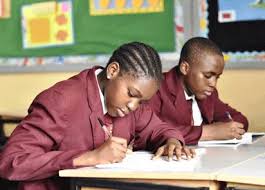WAEC Areas of Concentration for Physical and Health Education 2025/2026
The WAEC Areas of Concentration for Physical and Health Education 2025/2026 is designed to empower students with the knowledge, skills, and attitudes necessary for promoting and maintaining positive health.
Grounded in the Senior School Health Education curriculum, the syllabus emphasizes the importance of providing timely and accurate information to help students adopt healthful practices. It highlights that health education is skill-based, requiring practical involvement to assess students effectively through practical tests.
WAEC Areas of Concentration for Physical and Health Education 2025/2026: This examination syllabus aims to evaluate candidates on several key areas, including their understanding of the human body, essential health maintenance skills, and the promotion of positive health practices within their schools and communities.
READ ALSO:Your Guide to Getting Straight A’s in Waec – How to Pass WAEC 2025/2026 Without Stress
Students are expected to recognize the ecological relationships between humans and their environment, which is crucial for disease prevention. The syllabus also encourages students to draw insights from practical experiences that relate to health and fosters their readiness for professional training in health-related fields.
The examination comprises three papers: Papers 1, 2, and 3, which must all be completed. Paper 1 consists of 50 multiple-choice questions to be completed in one hour for a total of 50 marks.
Paper 2 is divided into two sections, with Section A featuring six short-structured questions for 30 marks, and Section B requiring candidates to answer two out of three essay questions for 40 marks, also to be completed in one hour.
Lastly, Paper 3 consists of a practical test for school candidates and an alternative practical test for private candidates, lasting 1¾ hours and carrying 80 marks
Materials
-
Models of Various Organs of the Body
-
Models of Various Parts of the Body (e.g., tooth)
-
Human Skeleton
-
Bones of the Body
-
Contraceptive Devices
-
Reagents for Testing of Starch, Protein, and Fat
-
Road Safety Signs
-
Different Types of Safety Elements
-
Posters/Charts of Systems of the Body (e.g., reproductive, digestive, excretory)
-
First Aid Box and Kits
-
Fire Extinguisher
-
Sand Bucket
-
Photographs of Health Facilities and Workers (e.g., doctors, nurses, dentists at work)
-
Photographs of Methods of Sewage and Refuse Disposals
-
Microscope
-
Stethoscope
-
Preserved Worms
-
Preserved Pests and Vectors
-
Photographs/Posters of Various Types of Communicable and Non-communicable Diseases
-
Model/Poster Showing Parts of the Body
- Materials for Personal Hygiene (e.g., toothpaste, comb, toothbrush)Dissecting Set
- Photographs/Posters of Accident Scenes
- Photographs/Posters Showing Methods of Food Preservation
- Photographs/Posters Showing Disaster Scenes
- Photographs/Posters of Drugs Commonly Misused/Abused
- Tobacco Products
- Hand Lens
- Real Objects/Photographs/Posters/Charts of Classes of Food
- Photographs/Posters Showing Correct Postures
- Photographs/Posters Showing Postural Abnormalities
- Poster/Real Object of Sphygmomanometer, Thermometer, Litmus Paper, Snellen Chart
WAEC Areas of Concentration for Physical and Health Education 2025/2026
| CONTENTS | NOTES |
|---|---|
| A. PRINCIPLES AND PHILOSOPHY OF PHYSICAL EDUCATION | |
| 1. Philosophy of Physical Education | |
| (a) Principles and philosophies of the founding fathers | Emphasis on Hetherington, Dudley Sergent, Thomas Wood, and John Dewey. |
| (b) Changes in the concept of Physical Education | |
| (c) Education of the physical and education through the physical | |
| 2. Physical Education Ideologies | |
| (a) Nationalism and patriotism in Physical Education and sport | Students should understand how Physical Education and sports enhance nationalism, patriotism, and national ideologies. |
| (b) National ideologies | |
| 3. Recreation | |
| (a) Definition and importance | Candidates should differentiate between work, rest, recreation, leisure, and sports. |
| (b) Types of recreational activities | |
| (i) Indoor | |
| (ii) Outdoor | |
| (c) Recreational activities: Walking, jogging, swimming, cycling, playing musical instruments, table tennis, camping, etc. | Students should differentiate between indoor and outdoor recreation. Safety in recreational activities should be mentioned. |
| (d) Differences between recreational activities and lifetime sports | |
| 4. Intramural and Extramural Activities and Tournament | |
| (a) Definitions of: | |
| (i) Intramural activities | |
| (ii) Extramural activities | |
| (b) Benefits of intramural and extramural activities | |
| (c) (i) Definition of tournament | |
| (ii) Types of tournament | Differences between intramural and extramural activities, minor and major games, and sports should be emphasized. Advantages and disadvantages of each type of tournament should be discussed. |
| 5. Traditional Sports in West Africa | |
| (a) Origin of traditional sports in West African countries | |
| (b) Types of traditional sports in different West African countries | |
| (c) Values of traditional sports | |
| 6. Greek Festivals and the Olympic Games | |
| (a) Greek Festivals: | Reference should be made to the origin and significance of these festivals. |
| (i) Usthman, Pythian, Nemean, and Olympian | |
| (ii) Ancient Olympic Games | |
| (b) The Modern Olympic Games | The origin and importance of the Olympic Games in ancient Greece should be discussed with emphasis on Sparta and Athens. The significance of the modern Olympic Games should also be covered. |
| CONTENTS | NOTES |
|---|---|
| B. NATIONAL AND INTERNATIONAL SPORTS COMPETITIONS | |
| 1. Sports Championships at the National Level | |
| (a) Organization and administration | |
| 2. Types of Championship | |
| (a) National championships organized by different sports associations/federations | |
| (b) National championships organized by corporate organizations | |
| (c) The National Sports Festival | |
| 3. Institutional Sports | |
| (a) The Universities Games | |
| (b) The Polytechnic Games | |
| (c) Colleges of Education Games | |
| (d) National School Sports Federation | |
| 4. The All African Games | |
| (a) History of the All-Africa Games | |
| (b) Reasons for disparity in the timing of the games | |
| (c) History and activities of the Supreme Council of Sports in Africa (SCSA) | |
| 5. International Competitions | |
| (a) FIFA World Cup | |
| (b) The Olympic/Paralympic Games | |
| (c) Commonwealth Games | |
| (d) All Africa Games | |
| (e) World Athletics Championship | |
| (f) World Swimming Championship | Emphasis should be on the history, organization, and governing bodies of these competitions. All sports federations have their own international competitions, which should be mentioned. |
| CONTENTS | NOTES |
|---|---|
| C. BASIC HUMAN ANATOMY AND PHYSIOLOGY IN RELATION TO PHYSICAL ACTIVITIES | |
| 1. Skeletal System | Candidates should be able to name the main parts of the human skeleton. |
| (a) Main parts and functions of the human skeleton | |
| (b) Bones and joints involved in movement | Joints permitting different kinds of movement should be discussed. |
| 2. Nervous System | |
| (a) The brain | |
| (b) The spinal cord | |
| (c) The nerves | The parts and functions of each organ listed should be discussed, including the simple reflex action. |
| 3. Circulatory System | |
| (a) The heart muscle | |
| (b) Effects of exercise on the heart | |
| (c) Blood circulation | |
| (d) Function of blood | |
| (e) Types of blood circulation | |
| 4. Respiratory System | |
| (a) The trachea, lungs, and nose | |
| (b) Functions | |
| (c) Types of respiration | Internal and external respiration should be emphasized. |
| (d) Aerobic and anaerobic sports | |
| 5. Skeletal Muscles | |
| (a) Major muscles of the body | |
| (b) Types of muscle contraction | Isotonic and isometric contractions should be emphasized. |
| (c) Muscle cramps: causes, prevention, and first aid | |
| 6. Somatotype | |
| (a) Description of various body types | |
| (b) Relationship between body type and physical activities and sports | |
| 7. Posture | |
| (a) Correct posture | |
| (b) Postural defects | Characteristics of correct posture should be discussed. Causes of postural defects such as kyphosis, scoliosis, lordosis, and flat foot should be stated. Corrective measures should be discussed. |

